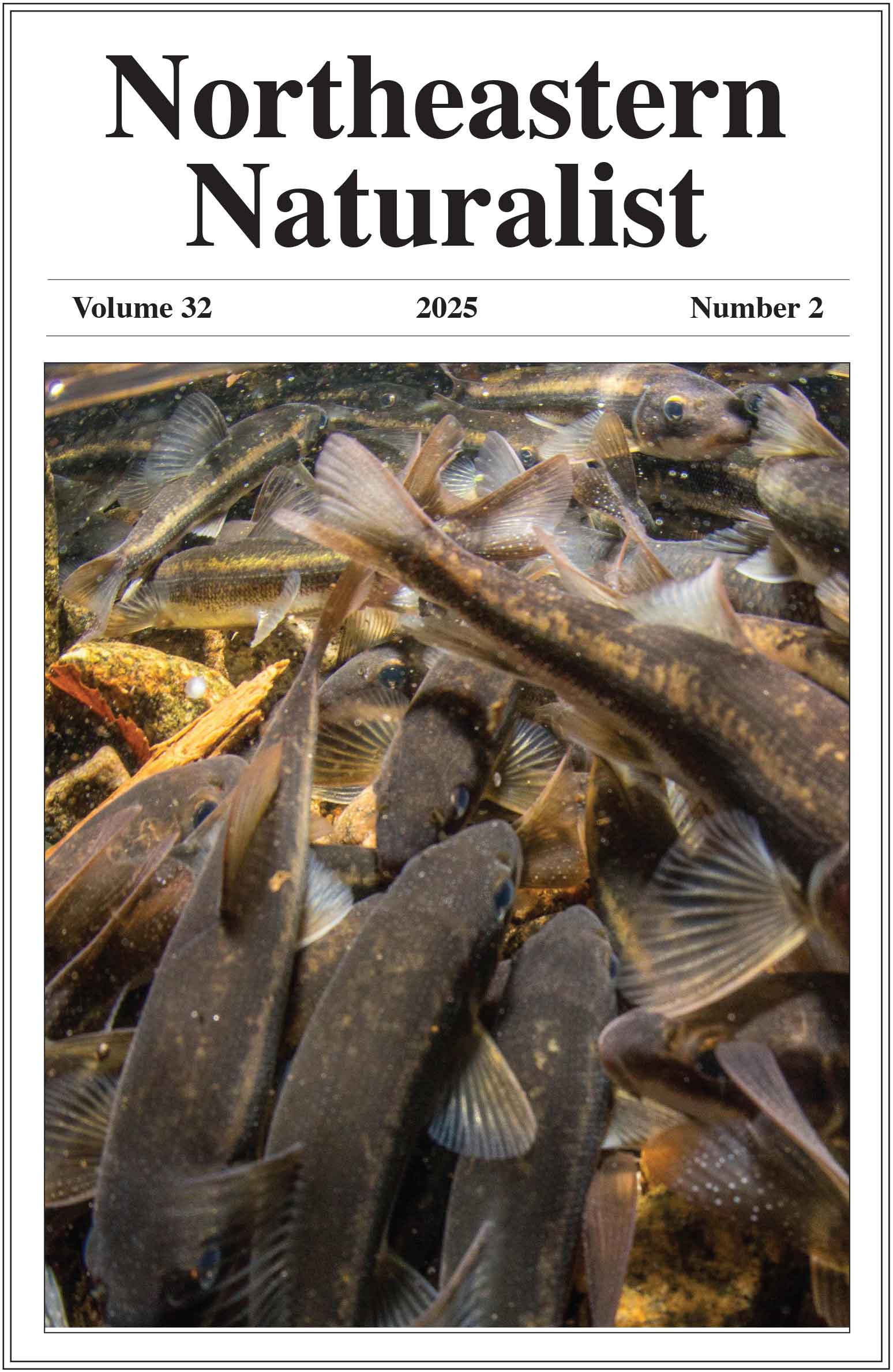A Survey of Wild Bees (Hymenoptera: Apoidea) on Maine Islands: Possible Refugia for Rare Native and Non-native Species
Sara L. Bushmann1,*, Francis A. Drummond2, and Chris Lage3
1George Stevens Academy, Blue Hill, ME, 04614, and School of Biology and Ecology, University of Maine, Orono, ME 04469. 2Professor Emeritus, School of Biology and Ecology, Orono, ME 04469. 3College of Arts and Sciences, University of Maine at Augusta, Augusta, ME 04330. *Corresponding author.
Northeastern Naturalist, Volume 32, Issue 2 (2025): 278–302
First published early online: 13 June 2025
Abstract
Understanding the distribution, diversity, and abundance of wild bees is important to managers of natural areas. We conducted a 4-year survey of wild bees on 11 islands in the Gulf of Maine. We captured specimens with the use of cups filled with soapy water and by collecting bees visiting flowers. We pinned and identified 1011 bees representing 23 genera as 103 species or species groups. No state records were recorded. Bumble bees were found on every visit to the islands. Bombus vagans (Half-black Bumble Bee) was the most frequently recorded bee, while the increasingly rare B. terricola (Yellow-banded Bumble Bee) was found on 6 of the islands, as was the parasitic B. fernaldae (Fernald’s Cuckoo Bumble Bee). No B. affinis (Rusty Patched Bumble Bee) were found on the islands. Of the solitary bees, 2 non-native species, Andrena wilkella (Wilke’s Mining Bee) and the sweat bee Lasioglossum zonulum, were the most commonly found species of those genera. Bees were recorded visiting native and non-native flowers with roughly equal frequency. Non-native bee species were frequently caught on non-native plants associated with disturbed habitats. Bee species richness did not differ significantly from mainland surveys, although the relative abundances of some species differed from the mainland. Multiple response permutation procedure (MRPP) and indicator species analysis (ISA) revealed that islands near each other harbor a more similar species assemblage than those farther apart. Driving this result was the sweat bee Augochlora pura, found only in 1 bay, and the absence of Andrena from another bay. The abundance of rare bumble bee species suggests the islands may serve as refugia from factors that contribute to bee decline.
![]() Download Full-text pdf (Accessible only to subscribers. To subscribe click here.)
Download Full-text pdf (Accessible only to subscribers. To subscribe click here.)
Access Journal Content
Open access browsing of table of contents and abstract pages. Full text pdfs available for download for subscribers.
Issue-in-Progress: Vol. 32 (3) ... early view
Check out NENA's latest monograph and Special Issue:













 The Northeastern Naturalist is a peer-reviewed journal that covers all aspects of natural history within northeastern North America. We welcome research articles, summary review papers, and observational notes.
The Northeastern Naturalist is a peer-reviewed journal that covers all aspects of natural history within northeastern North America. We welcome research articles, summary review papers, and observational notes.